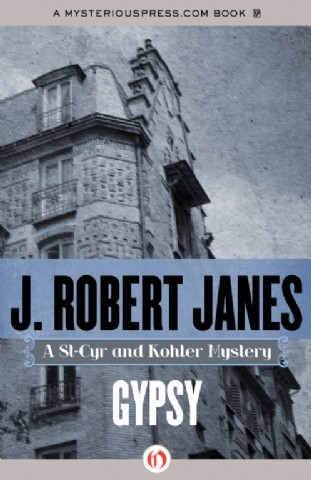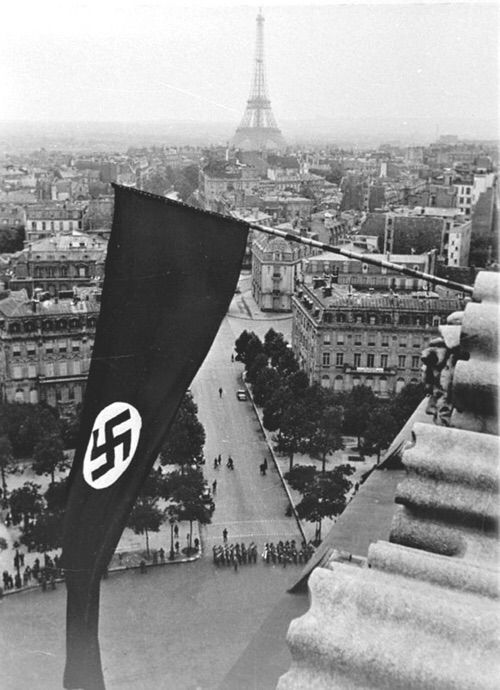It is Occupied Paris 1943, and a series of robberies demand the attention of the luckless duo of Louis St Cyr and Hermann Kohler. The robberies are bold, vast, and deft. But this is no mere thief because fatal booby traps have been left behind to discourage police investigation. Stealing millions of francs from a metro safe is of little consequence, but the theft of industrial diamonds bound for the Reich’s war machine is a red alarm, and our exhausted heroes are called in. Much has been said about them in earlier posts and will not be repeated here.

As usual no one will tell the the truth. As usual there are threats. As usual there are misleading clues. What is unusual is the audacity of the crimes, even high ranking Nazis in occupied Paris are been relieved of valuables they had just stolen from Jews! Audacious also in that three crimes were perpetrated in one night alone! Worse the booby traps have claimed victims, a chamber maid come to clean a room, a flic who opened a door, and a bomb disposal squad whose members should have known better. The villain also tries to eliminate St Cyr and Kohler; this a joker who plays for keeps.

The perpetrator, it emerges, is called The Gypsy, because part of his childhood was spent with some Romani people. Though he himself is tall, Aryan in appearance with the blond hair, and piercing blue eyes of a film star combined with multilingual charm and confidence. The irony is that his appearance and the Nazi uniform he wears, supplied by his would-be control, put him above suspension. His gypsy heritage ostensibly explains his preternatural skills as a thief.
Spoiler alert.
If I have grasped the plot, the Gypsy was in the slammer when the Nazis occupied Oslo. Then some bright Nazi spark had the idea of using him to infiltrate a Resistance network in France by inserting him as though he were an English agent. The connection would be made through a one-time girlfriend. What can go wrong? In return for exposing the Resistance network the Gypsy would be allowed to keep any loot he collected and sent on to Spain. (As if.) The members of the Resistance group he reveals would of course be tortured and murdered. The assumption was that the loot would come from the French, not Nazis themselves. So much for assumptions.
Once released, equipped, briefed, financed, and in France, however, the Gypsy pursues his own agenda. He slips his watchers, he manipulates the girlfriend into the frame and disappears. Then the robberies occur in rapid succession.
Now I may have gotten muddled because Janes’s elliptic style shows no mercy to slow wits. There is never a summation at the end in the Agatha Christie manner. But it seems the Gypsy had an earlier career of theft in Berlin where he stole from Nazis with great success until the Norwegians nabbed him. So far so good.
Meanwhile, the bright Nazi spark who loosened the Gypsy now tries to blame the crime wave onto (1) the Resistance and/or (2) St Cyr and Kohler. To that end this Nazi takes hostages, beats witnesses, and generally shrieks at one and all. If he cannot shift the blame, the axe will fall on him, no metaphor intended. Again I follow.
But what I do not follow is this. The Resistance network targeted was inactive, inert, and consisted of three well-meaning women who had done nothing and were never likely to do so. Nor did they have contact with others in the Resistance. They hardly seem a high profile target for such a far fetched and elaborate effort. That part I do not get.
Nor does the denouement make much sense to this reader. That these three women contrive and execute such a plan once the Gypsy shows himself is beyond my suspension of disbelief. That they nearly spontaneously concocted and implemented the plan is just not credible. They managed to out manoeuvre the Gypsy, the Nazis and the allied goons, and our heroes. If they were able to do that, well, why did they not do more for the Resistance?
Nor did I ever fathom what the Gypsy’s agenda was, apart form thieving for its own sake. He is simply a plot device in this outing and denied personality apart from one brief scene in the Metro.
On the other hand, the siege of the hideout is marvellously told as is the evocation of Paris in 1943 when a Nazi victory seemed on the horizon.
As usual our heroes are full of angst! But as usual the reader knows they will somehow square the circle. These two will survive to the next volume in this long running series.
Skip to content
